Montessori Moon Phase 3-Part Cards (English, Chinese, Korean)
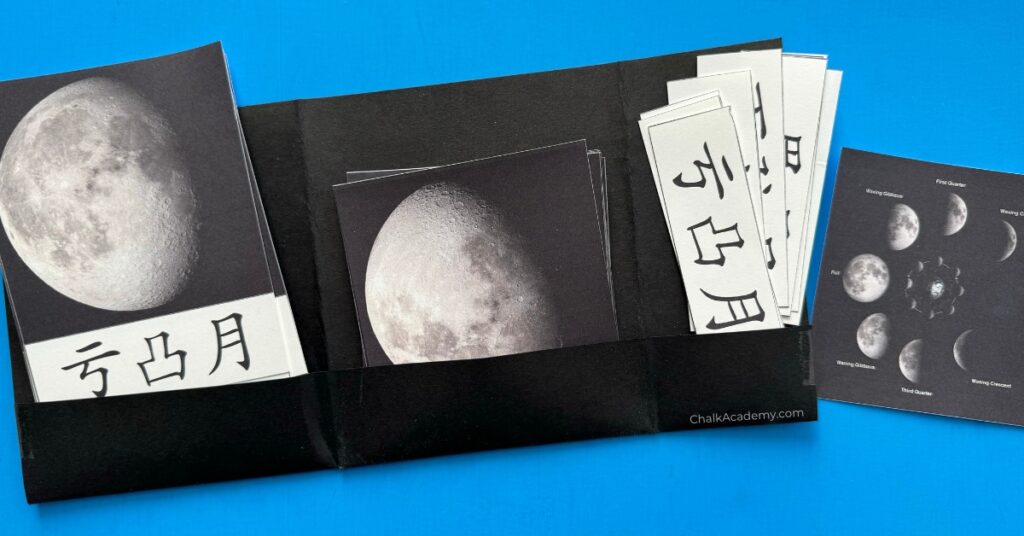
Our kids are learning about the moon since it’s almost the Mid-Autumn Festival. To be honest, I’m relearning moon phases, too! To help us remember wacky lunar names, we’re using printable Montessori 3-part moon phase cards with real NASA photos.
Waxing Gibbous, anyone? Please tell me we aren’t alone in forgetting these complex moon phase names!
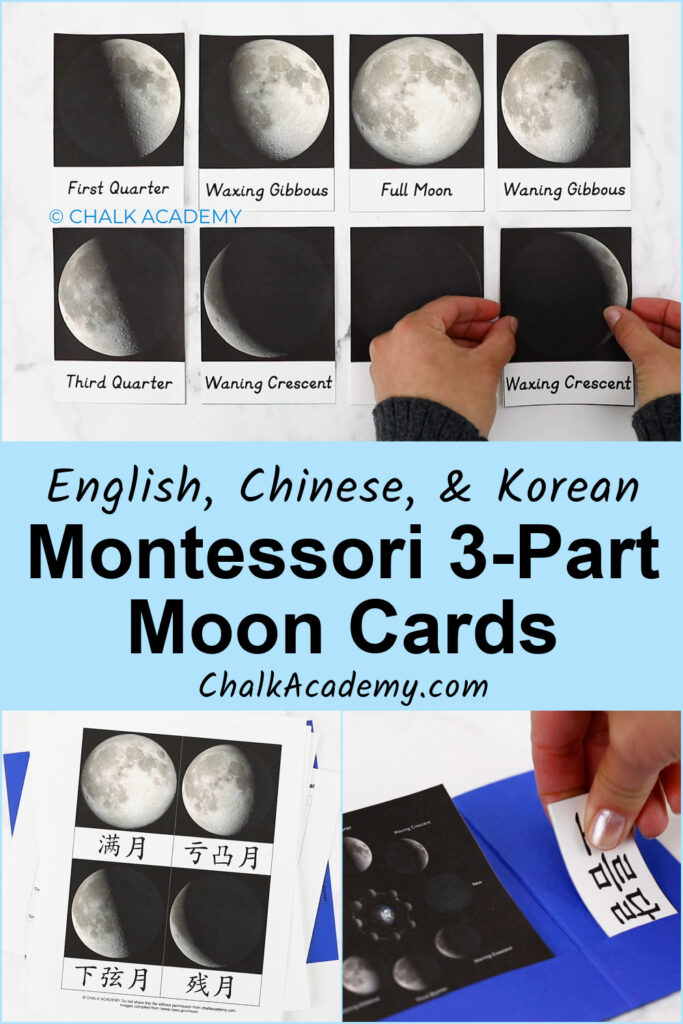
Since we’re hoping to raise trilingual children, I created our Montessori moon phase 3-part cards in Chinese, Korean, and English. I hope they can help your family with homeschooling or supplementing regular school.
Chalk Academy is reader-supported. Some of the links are affiliate links. When you buy something through an affiliate link, we may earn a very small commission at no cost to you. Details here.
Supplies for Montessori moon phase 3-part cards activity
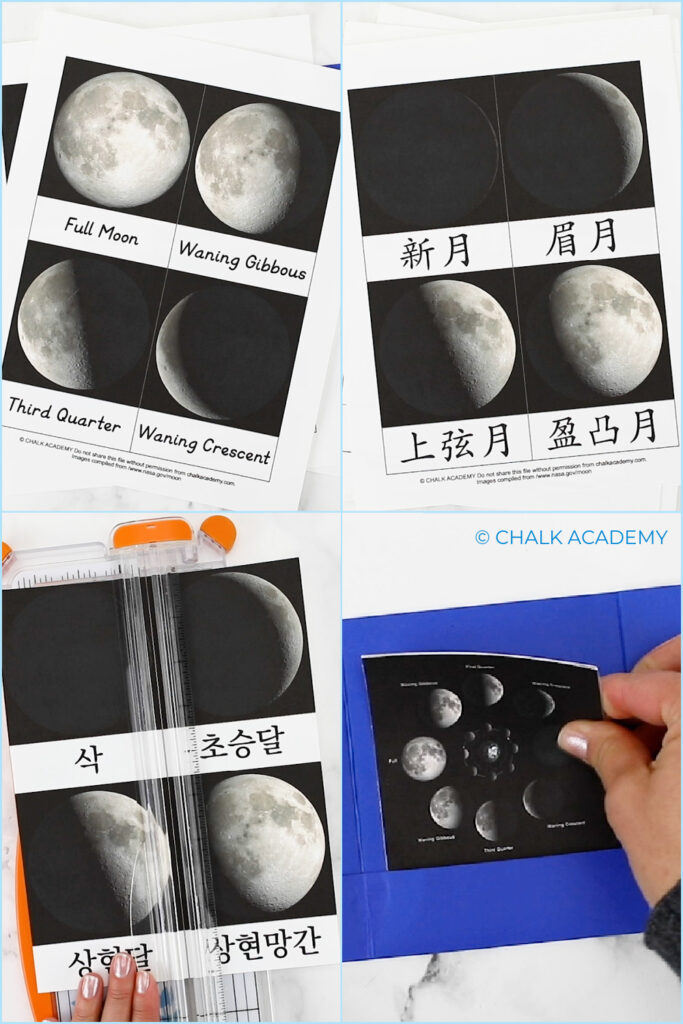
- Montessori 3-part cards with folder template
- Printer
- White cardstock paper
- Paper trimmer or scissors
- Optional: Laminator and laminating pouches (consider for durability)
How to teach moon phases with Montessori 3-part cards
Each set of cards is made up of 3-parts:
- Picture (photo or realistic drawing)
- Label (the picture’s name)
- Control card with picture and label together
Moon phase control cards
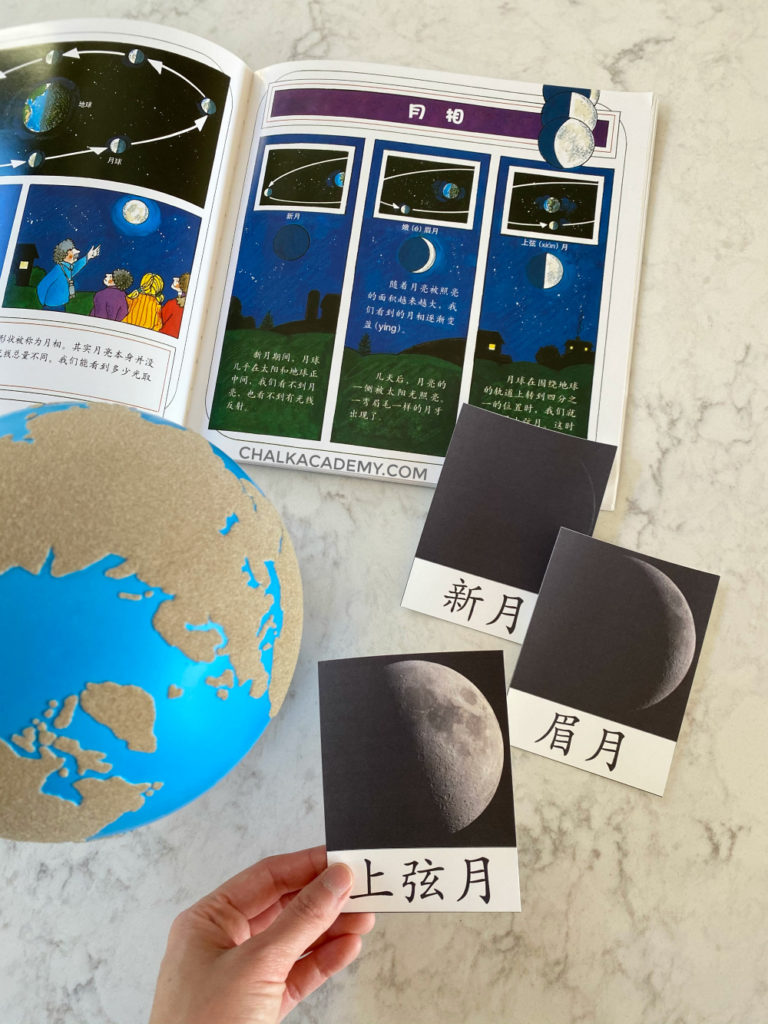
Control cards can be used at any age to practice recognizing an image and learning moon phase names. For example, you can use them while reading children’s books about the moon.
Introducing moon phases with the 3-period lesson
- Period 1 – Introducing each moon phase name: “This is the moon. 这是月球 (Zhè shì yuèqiú).”
- Period 2 – Assessing whether a child can recognize the moon phase name without pressure to name it: “Show me the moon. 给我看月球 / 給我看月亮(Gěi wǒ kàn yuèqiú).”
- Period 3 – Seeing if the child can come up with the moon phase name when asked: “What is this? 这是什么?/ 這是什麼?(Zhè shì shénme?)
Matching moon phase 3-part cards
Younger children can match moon phase photos, while those ready to read can use the word cards.
Because of the moon craters, matching images in this set is trickier than other Montessori 3-part cards.
Since kids can self-check their work, 3-part cards encourage independent observation and matching. In turn, concentration and confidence grow.
Organizing Montessori cards
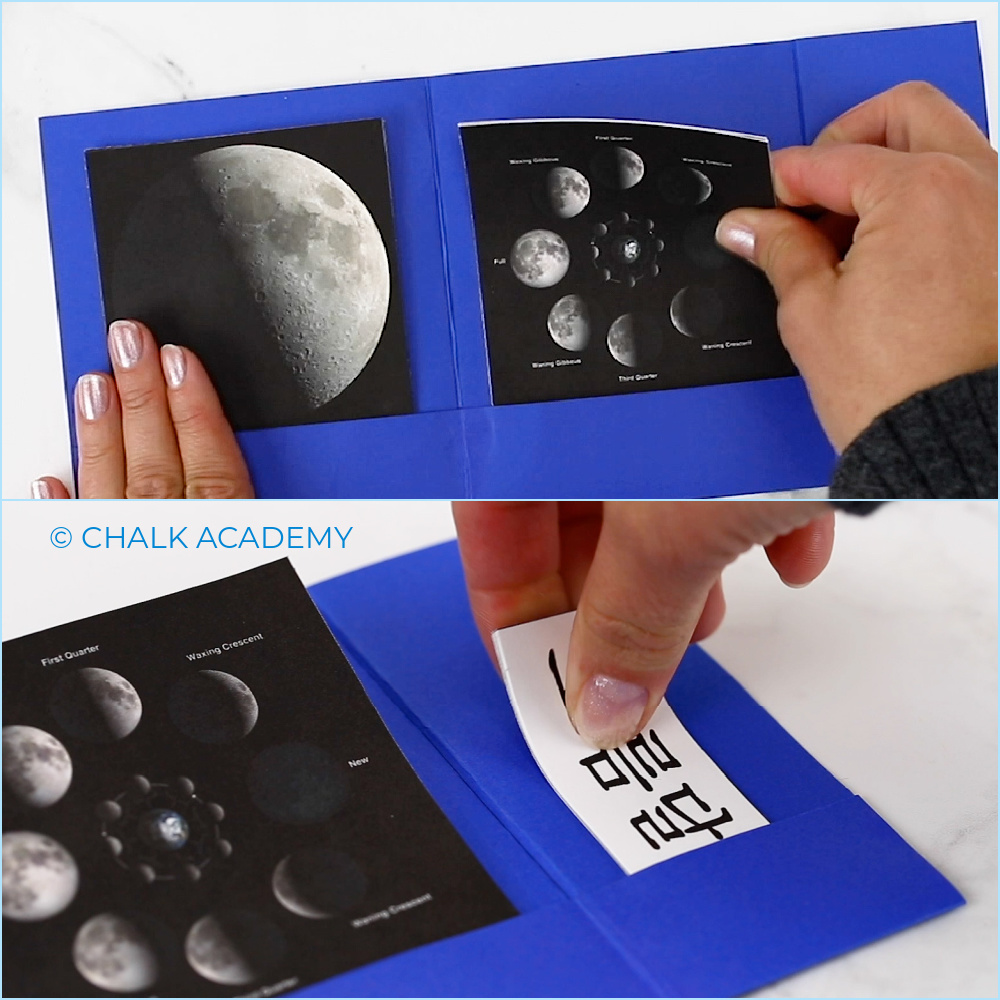
In the downloadable PDF file, I’ve created a convenient template for organizing and storing the Montessori moon phase 3-part cards.
One section is for the control cards, one section is for the image cards, and the smallest slot is for the labels.
Important moon phase names in Chinese, Korean, English
Below are the moon phase names that our children learned. The words are listed in simplified Chinese, traditional Chinese, Hanyu Pinyin, Korean, and English.
- Moon*
- 月球 (Yuèqiú) or 月亮 (Yuèliàng)
- 삭
- Phases of the moon
- 月相 (Yuè xiàng )
- 달의 위상 or 월상
- New moon
- 新月 (Xīn yuè)
- 삭
- Waxing crescent – Right side 1-49%
- 眉月 (Méi yuè)
- 초승달
- First quarter – Right side 50%
- 上弦月 (Shàngxián yuè)
- 상현달
- Waxing gibbous – Right side 51-99%
- 盈凸月 (Yíng tú yuè)
- 상현망간
- Full moon -– 100%
- 满月 / 滿月 / (Mǎnyuè)
- 보름달(망)
- Waning gibbous – Left side 51-99%
- 亏凸月 / 虧凸月 (Kuī tú yuè)
- 하현망간
- Last quarter – Left side 50%
- 下弦月 (Xiàxián yuè)
- 하현달
- Waning crescent – Left side 1-49%
- 残月 / 殘月 (Cányuè)
- 그믐달
- Lunar eclipse – when Earth’s shadow blocks the sun’s light, which otherwise reflects off the moon
- 月蚀 / 月蝕 (Yuè shí / Lunar eclipse)
- 월식
In Chinese, 月球 (yuèqiú) is the scientific term, while 月亮 (yuèliàng) is used colloquially in everyday conversation.
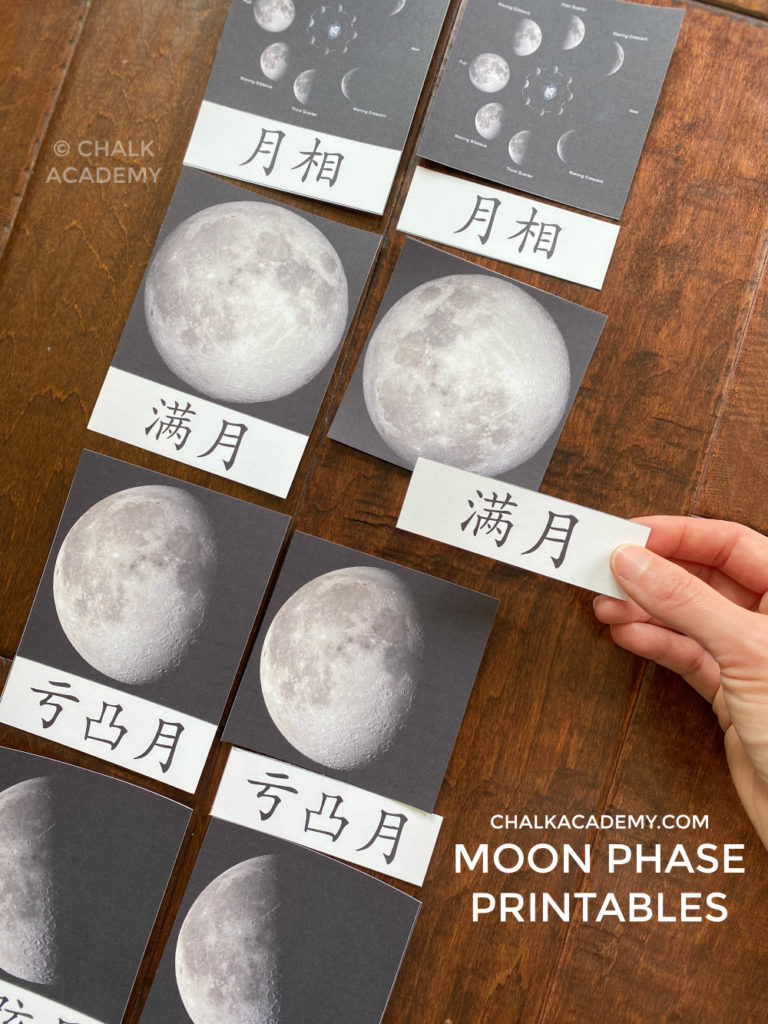
Get your Montessori 3-part cards activity pack here
Have you used these moon phase Montessori 3-part cards?
If you try this activity, please let us know in the comments below! What age(s) are your kid(s), and how did it go? We’d love to hear about your learning experience!
More Montessori 3-part cards for kids
These Montessori printables are available in English, Simplified Chinese, Traditional chinese, and Korean!
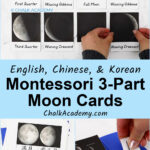
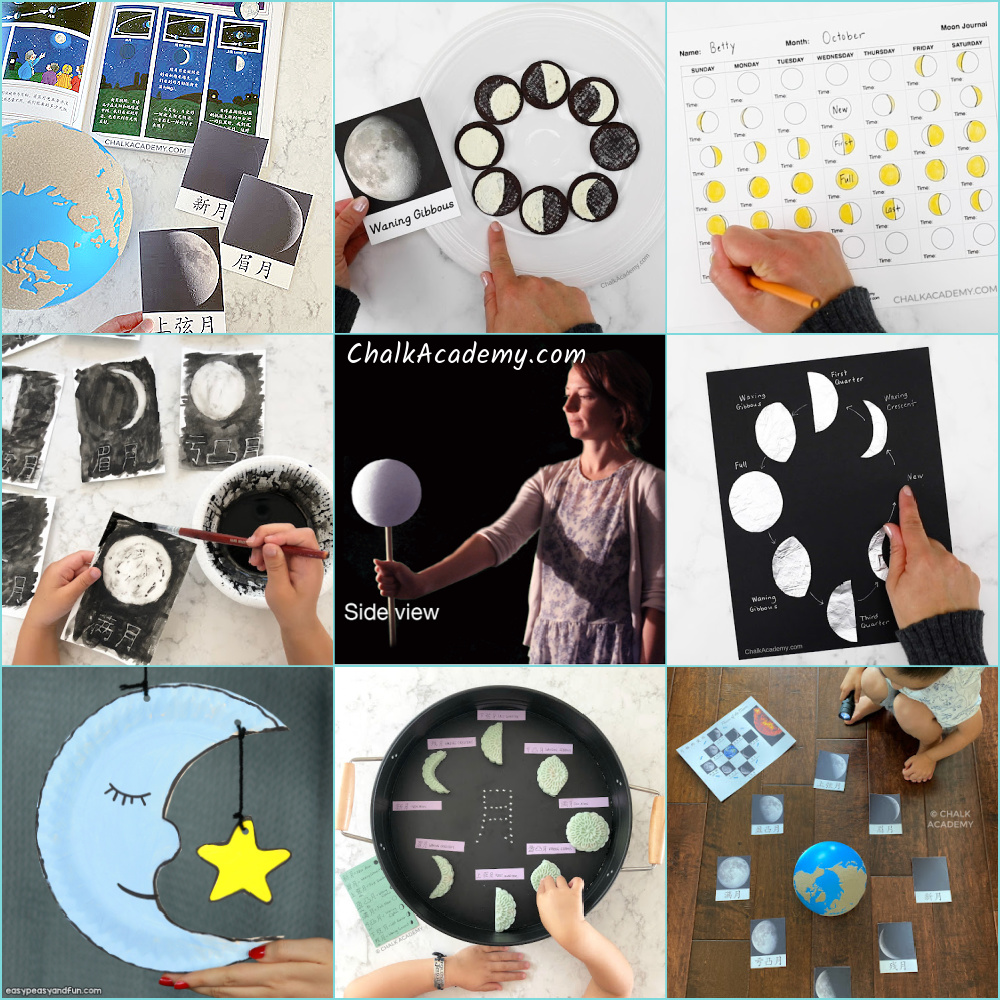
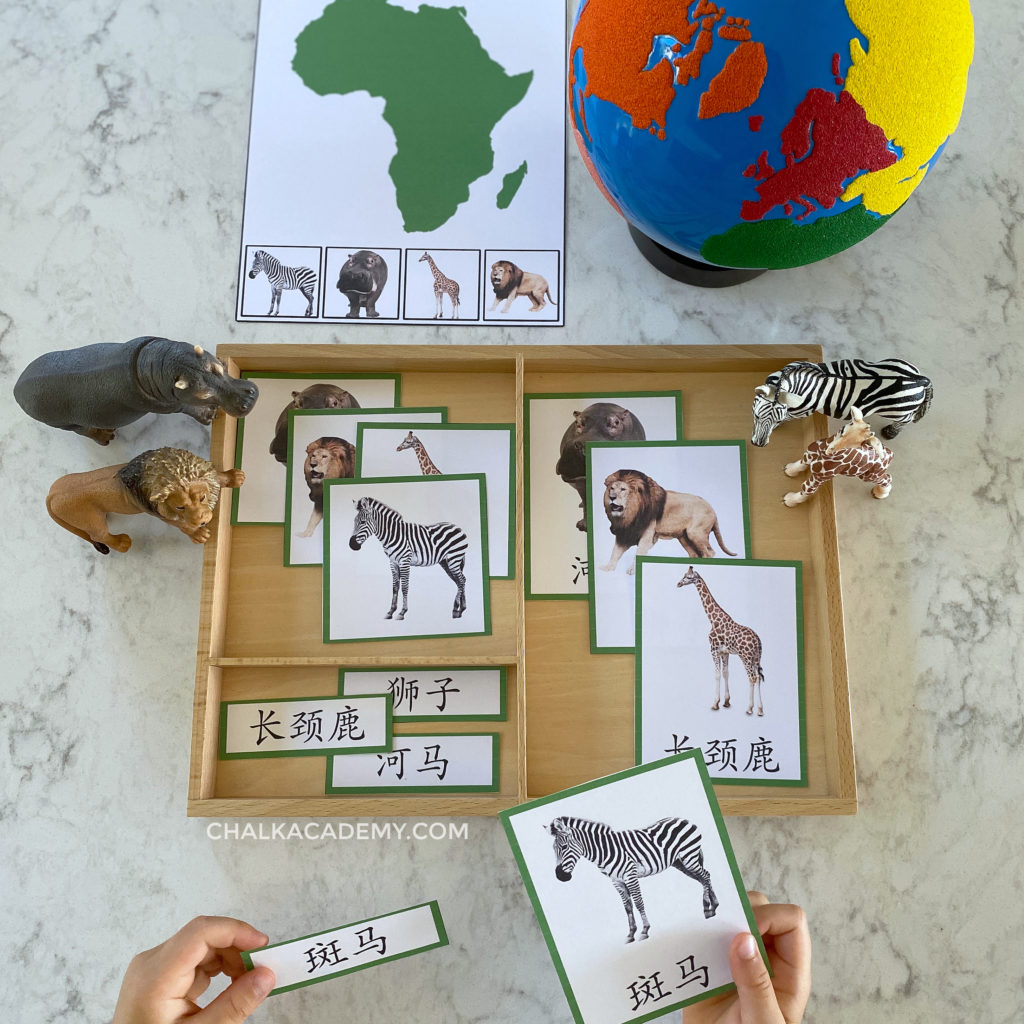
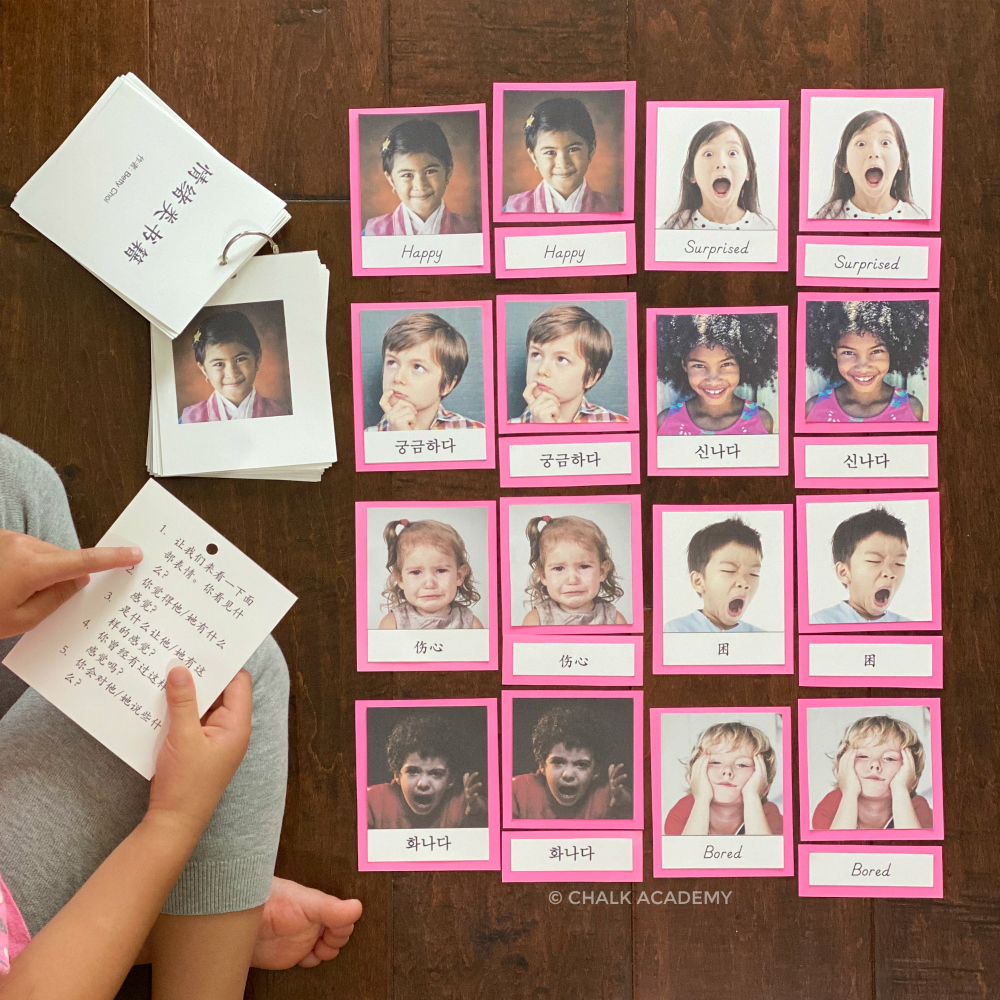
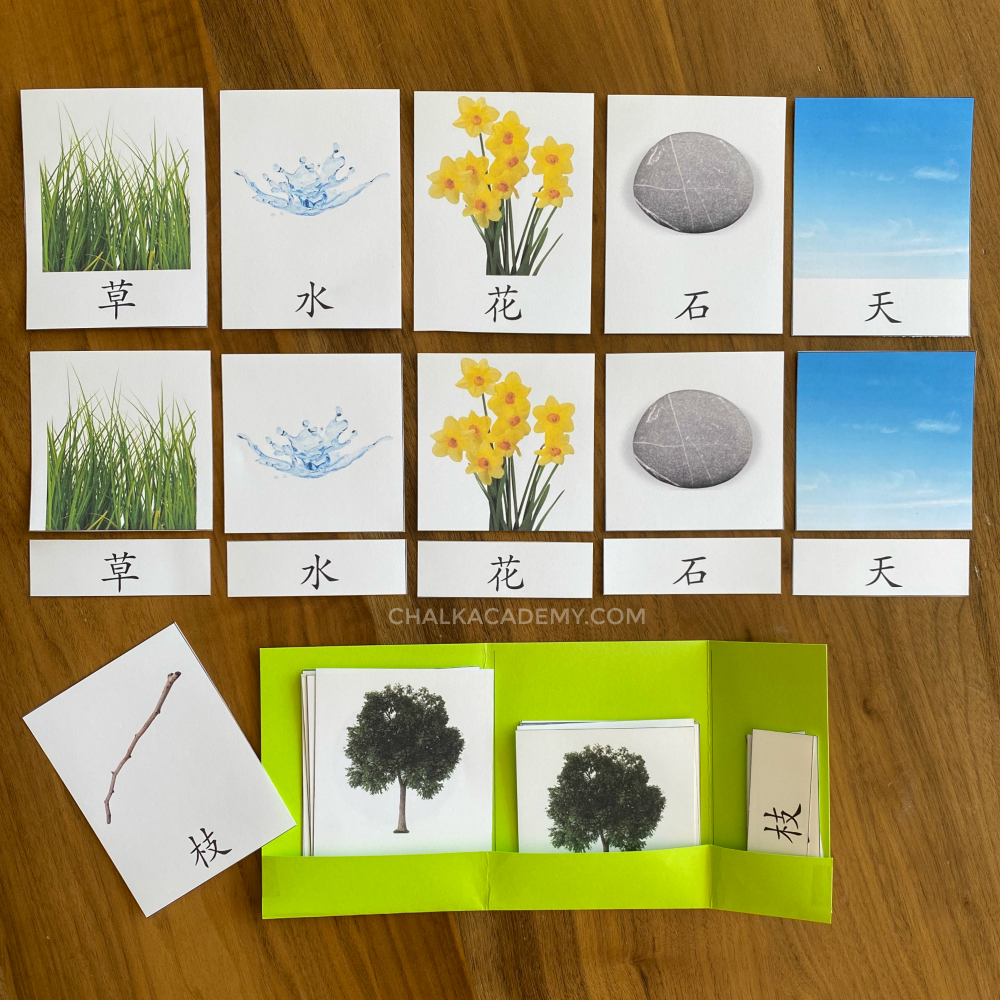

May I know what is the book name shown in the picture?
Hi Lois, it’s The Moon Book by Gail Gibbons. This link is for the English version. The Chinese version seems to be out of stock in the US right now, but if you’re able to shop overseas, JD and Taobao usually carry this author’s books.